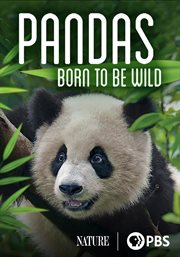Review by Booklist Review
Ages 5^-7. Conveying the fine, fuzzy fur of baby panda Pi-shu as well as the lushness of his bamboo forest in central China, dreamy, soft, and lovely illustrations draw youngsters in. They'll watch young Pi-Shu grow under the guidance of his mom and meet the golden monkeys and bamboo rats that share the pandas' central highlands home. One day as Pi-Shu strays down the mountainside, he encounters humans who are clearing parts of the forest to farm and burning the trees for fuel. Fortunately, Pi-Shu retreats safely into the forest to his mother, who senses the encroaching danger. She and Pi-Shu seek a new source of bamboo and water further up the mountain. They find an alternative place to resettle, but as the book's concluding notes make clear, giant pandas like Pi-Shu are an endangered species because of just such destruction of their habitat. The book's slight anthropomorphism can be forgiven in light of the awareness it creates about the risk of extinction. --Ellen Mandel
From Booklist, Copyright (c) American Library Association. Used with permission.
Review by Publisher's Weekly Review
Butler (Little Sibu) turns the spotlight on another endangered species in this tenderly delineated tale of a baby panda, his mother and their quest for a peaceful habitat. Beginning with Pi-shu's birth ("He was no bigger than one of the patches around his mother's eyes"), Butler tracks the little panda's adventurous first year, shedding light on its diet (bamboo) and fellow creatures, including "frogs that jumped when he sniffed them" and golden monkeys that he follows down the mountainside. The author also hints at the panda's disappearing habitat when "a smoky smell warned him to stop" and he sees men clearing away timber. Mother and cub then make the trek over the snowy mountains to a remote valley, their new home. Butler's simple story line effectively relates basic information (expanded on in an afterword) while remaining true to the animals' nature, but it's the artwork that takes center stage. Although a few images border on the excessively cute (the animals, for instance, all appear to be smiling), the lush details on uncluttered backgrounds perfectly capture sweeping vistas as well as the tiniest fern frond. Butler also compellingly outlines the intimacy between mother panda and the irresistibly bright-eyed Pi-shu. Ages 4-8. (Mar.) (c) Copyright PWxyz, LLC. All rights reserved
(c) Copyright PWxyz, LLC. All rights reserved
Review by School Library Journal Review
PreS-Gr 2-A story that begins with promise ends abruptly and without resolution. A newborn panda grows up close to a loving mother, learning to walk, climb, and eat bamboo. Simple panda facts, accessible to young children, are deftly woven into the narrative. The plot then changes gears, seemingly becoming an environmental tale, when Pi-shu happens upon some deforestation and, frightened by the smells and noise, runs for his mother. She "sensed that this part of the forest wasn't safe anymore," and takes her baby on a long journey over the plateau to the next valley. They arrive at a grove of bamboo next to a clear mountain stream, and the story ends. There is no indication that this is a perfect area to serve as their new home; instead, the author states that "One day Pi-shu would want to-find a place of his own to live" but is content where he is for now. This seems completely out of place with the rest of the story. The pictures are gorgeous, with panoramic views of the valleys and mountains at dusk, snow gently falling on the huddled mother and child, and expressive faces on the lifelike pandas. However, the unsatisfying conclusion detracts from an otherwise enchanting book.-Holly Belli, Bergen County Cooperative Library System, West Caldwell, NJ (c) Copyright 2010. Library Journals LLC, a wholly owned subsidiary of Media Source, Inc. No redistribution permitted.
(c) Copyright Library Journals LLC, a wholly owned subsidiary of Media Source, Inc. No redistribution permitted.
Review by Horn Book Review
Exquisite pastel drawings are the main feature of this gentle, realistic story about a panda's first year. When young Pi-shu ventures away from his mother, he discovers men cutting down trees, so he and his mother trek over the mountains to a wilder area. Both animals and setting are accurate and immensely appealing. Panda facts appear at the end of the book. From HORN BOOK Fall 2001, (c) Copyright 2010. The Horn Book, Inc., a wholly owned subsidiary of Media Source, Inc. No redistribution permitted.
(c) Copyright The Horn Book, Inc., a wholly owned subsidiary of Media Source, Inc. No redistribution permitted.
Review by Kirkus Book Review
It's difficult to resist the universal appeal of pandas, and this slight tale of a young one and his mother is no exception. Pi-shu, whose name, readers learn from the notes, is an ancient Chinese word for panda and means "brave," has a tiny tail when he is born and is barely the size of one of his mother's eye patches. But he does grow quickly and learns to eat bamboo, climb trees, and observe other animals, like bamboo rats and golden monkeys. Then men encroach upon the forest, chopping trees for their own use, causing Pi-shu and his mother to search for a more remote, safer locale. Butler's prose is somewhat overwrought, with every noun carrying the weight of an adjective, and sometimes two. The pictures are pretty, with the roly-poly pandas in their black and white furriness contrasting with the misty mountains, lush greenery, and snowy hills. Not of the caliber of the venerable Panda of Susan Bonners (1978), and rather heavy-footed in its ecological message, butoh!those faces. (Picture book. 4-8)
Copyright (c) Kirkus Reviews, used with permission.

